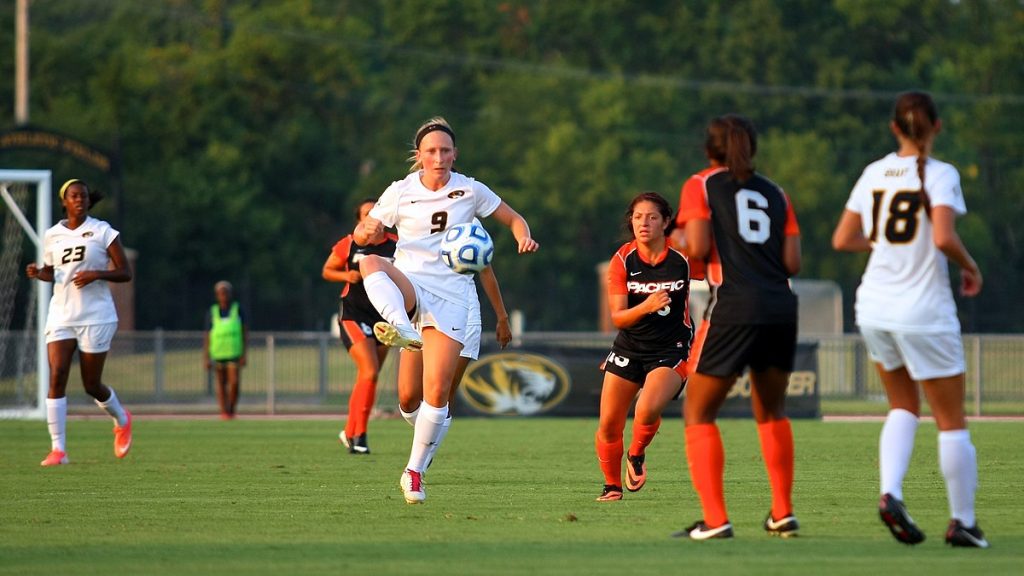6.1 Defining a Group

Learning Outcomes
By the end of this chapter, you’ll be able to:
- Differentiate between primary and secondary groups.
- Recognize in-groups and out-groups as subtypes of primary and secondary groups
- Define reference groups
Introduction
Most of us feel comfortable using the word “group” without giving it much thought. Often, we mean different things when using that word. We might say that a group of kids all saw the dog, and it could mean 250 students in a lecture hall or four siblings playing on a front lawn. In everyday use, it can be a generic term, although it carries important clinical and scientific meanings. Moreover, the concept of a group is central to much of how we think about society and human interaction. So how can we hone the meaning more precisely for sociological purposes?
The term group is an amorphous one and can refer to a wide variety of gatherings, from just two people (think about a “group project” in school when you partner with another student), a club, a regular gathering of friends, or people who work together or share a hobby. In short, the term refers to any collection of at least two people who interact with some frequency and who share a sense that their identity is somehow aligned with the group. Of course, every time people are gathered, it is not necessarily a group. A rally is usually a one-time event, for instance, and belonging to a political party doesn’t imply interaction with others. People who happen to be in the same place at the same time but who do not interact or share a sense of identity—such as a bunch of people standing in line at Starbucks—are considered an aggregate, or a crowd.
Another example of a nongroup is people who share similar characteristics but are not tied to one another in any way. These people are considered a category, and as an example all children born from approximately 1980–2000 are referred to as “Millennials.” Why are Millennials a category and not a group? Because while some of them may share a sense of identity, they do not, as a whole, interact frequently with each other.
Interestingly, people within an aggregate or category can become a group. During disasters, people in a neighborhood (an aggregate) who did not know each other might become friendly and depend on each other at the local shelter. After the disaster when people go back to simply living near each other, the feeling of cohesiveness may last since they have all shared an experience. They might remain a group, practicing emergency readiness, coordinating supplies for next time, or taking turns caring for neighbors who need extra help.
Similarly, there may be many groups within a single category. Consider teachers, for example. Within this category, groups may exist like teachers’ unions, teachers who coach, or staff members who are involved with the PTA.
Types of Groups
Sociologist Charles Horton Cooley (1864–1929) suggested that groups can broadly be divided into two categories: primary groups and secondary groups (Cooley 1909). According to Cooley, primary groups play the most critical role in our lives. The primary group is usually fairly small and is made up of individuals who generally engage face-to-face in long-term emotional ways. This group serves emotional needs: expressive functions rather than pragmatic ones. The primary group is usually made up of significant others, those individuals who have the most impact on our socialization. The best example of a primary group is the family.
Secondary groups are often larger and impersonal. They may also be task-focused and time-limited. These groups serve an instrumental function rather than an expressive one, meaning that their role is more goal- or task-oriented than emotional. A classroom or office can be an example of a secondary group.
Neither primary nor secondary groups are bound by strict definitions or set limits. In fact, people can move from one group to another. A group of coworkers, for example, can start as a secondary group, but as the employees work together over the years, they may find common interests and strong ties that transform them into a primary group. As we will discuss in the chapter on Media and Technology, even online networks of people with common interests can sometimes move from secondary to primary group status.
In-Groups and Out-Groups

One of the ways that groups can be powerful is through inclusion, and its inverse, exclusion. The feeling that we belong in an elite or select group is a heady one, while the feeling of not being allowed in, or of being in competition with a group, can be motivating in a different way. Sociologist William Sumner (1840–1910) developed the concepts of in-group and out-group to explain this phenomenon (Sumner 1906). In short, an in-group is the group that an individual feels she belongs to, and she believes it to be an integral part of who she is. An out-group, conversely, is a group someone doesn’t belong to; often we may feel disdain or competition in relationship to an out-group. Sports teams, unions, and sororities are examples of in-groups and out-groups. Primary groups consist of both in-groups and out-groups, as do secondary groups.
While group affiliations can be neutral or positive, the concept of in-groups and out-groups can also explain some negative human behavior, such as white supremacist movements. By defining others as “not like us” and inferior, in-groups can end up practicing ethnocentrism, racism, sexism, ageism, and heterosexism—manners of judging others negatively based on their culture, race, sex, age, or sexuality.
Often, in-groups can form within a secondary group. For instance, a workplace can have cliques of people, from senior executives who play golf together, to engineers who write code together, to young singles who socialize after hours. While these in-groups might show favoritism and affinity for other in-group members, the overall organization may be unable or unwilling to acknowledge it. Therefore, it pays to be wary of the politics of in-groups, since members may exclude others as a form of gaining status within the group.
Big Picture: Bullying and Cyberbullying: How Technology Has Changed the Game
Most of us know that the old rhyme “sticks and stones may break my bones, but words will never hurt me” is inaccurate. Words can hurt, and never is that more apparent than in instances of bullying. Bullying often reaches extreme levels of cruelty in children and young adults. People at these stages of life are especially vulnerable to opinions of others and deeply invested in their peer groups. Today, cyberbullying is on the rise. Cyberbullying can involve sending threatening texts, harassing someone in a public forum (such as social media), hacking someone’s account and pretending to be them, posting embarrassing images online, and so on. A study by the Cyberbullying Research Center found that 28 percent of teens have been a victim of cyberbullying (Hinduja and Patchin, 2019). Severe bullying can lead to suicidal thoughts and suicide attempts (John, 2018). Researchers noted that students who experienced in-person and online bullying were eleven times more likely to attempt suicide (Hinduja, 2018). Whereas bullying face-to-face requires willingness to interact with your victim, cyberbullying allows bullies to harass others from the privacy of their homes without witnessing the damage firsthand. This form of bullying is particularly dangerous because it’s widely accessible and therefore easier to carry out. Cyberbullying can create a feeling of powerlessness and inescapability because victimization is not constrained to physical locations. Many victims report being harassed across multiple platforms or formats at the same time.
Cyberbullying first made international headlines in 2010 when a fifteen-year-old girl, Phoebe Prince, in South Hadley, Massachusetts, died by suicide after being relentlessly bullied by girls at her school. In the aftermath of her death, the bullies were prosecuted and the state passed anti-bullying legislation. This marked a significant change in how bullying, including cyberbullying, is viewed in the United States. Now there are numerous resources for schools, families, and communities to provide education and prevention on this issue. Social media platforms and their parent companies are also taking steps (often under pressure from communities) to improve cyberbullying detection and reporting capabilities.
According to a report released in 2013 by the National Center for Educational Statistics, close to 1 in every 3 (27.8 percent) students report being bullied by their school peers. Seventeen percent of students reported being the victims of cyberbullying. Overall, LGBTQ youth are targeted at a higher rate than other youth, and members of minority populations overall are more likely to be cyberbullying victims (Hinjuda & Patchin, 2020). Finally, adults (particularly college students) are also frequent cyberbullying victims and perpetrators.
Reference Groups

A reference group is a group that people compare themselves to—it provides a standard of measurement. In U.S. society, peer groups are common reference groups. Kids and adults pay attention to what their peers wear, what music they like, what they do with their free time—and they compare themselves to what they see. Most people have more than one reference group, so a middle school boy might look not just at his classmates but also at his older brother’s friends and see a different set of norms. And he might observe the behaviors of his favorite athletes for yet another point of reference.
Some other examples of reference groups can be one’s cultural center, workplace, family gathering, and even parents. Often, reference groups convey competing messages. For instance, on television and in movies, young adults often have wonderful apartments and cars and lively social lives despite not holding a job. In music videos, young women might dance and sing in a sexually aggressive way that suggests experience beyond their years. At all ages, we use reference groups to help guide our behavior and establish our social norms. So how important is it to surround yourself with positive reference groups? You may not recognize a reference group, but it still influences the way you act. Identifying your reference groups can help you understand the source of the social identities you aspire to or want to distance yourself from.

Sociology in the Real World: Postsecondary Institutions: A World of In-Groups, Out-Groups, and Reference Groups
For a student entering postsecondary institution, the sociological study of groups takes on an immediate and practical meaning. After all, when we arrive someplace new, most of us glance around to see how well we fit in or stand out in the ways we want. This is a natural response to a reference group, and on a large campus, there can be many competing groups. Say you are a strong athlete who wants to play intramural sports, and your favorite musicians are a local punk band. You may find yourself engaged with two very different reference groups.
These reference groups can also become your in-groups or out-groups. For instance, different groups on campus might solicit you to join. Are there fraternities and sororities at your school? If so, chances are they will try to convince students—that is, students they deem worthy—to join them. And if you love playing soccer and want to play on a campus team, but you’re wearing shredded jeans, combat boots, and a local band T-shirt, you might have a hard time convincing the soccer team to give you a chance. While most campus groups refrain from insulting competing groups, there is a definite sense of an in-group versus an out-group. “Them?” a member might say. “They’re all right, but their parties are nowhere near as cool as ours.” Or, “Only serious engineering geeks join that group.” This immediate categorization into in-groups and out-groups means that students must choose carefully, since whatever group they associate with might define their friends for several years to come.
Media Attributions
- Group of People Sitting on White Mat on Grass Field © Helena Lopes used under license via Pexels
- Construction and engineering students visit the Folsom spillway job site © US Army Core of Engineers is licensed under a Public Domain license
- Kaysie Clark © nonorganical is licensed under a CC BY (Attribution) license
- Sorority Bid Day © HendersonStateU is licensed under a CC BY-NC (Attribution NonCommercial) license

